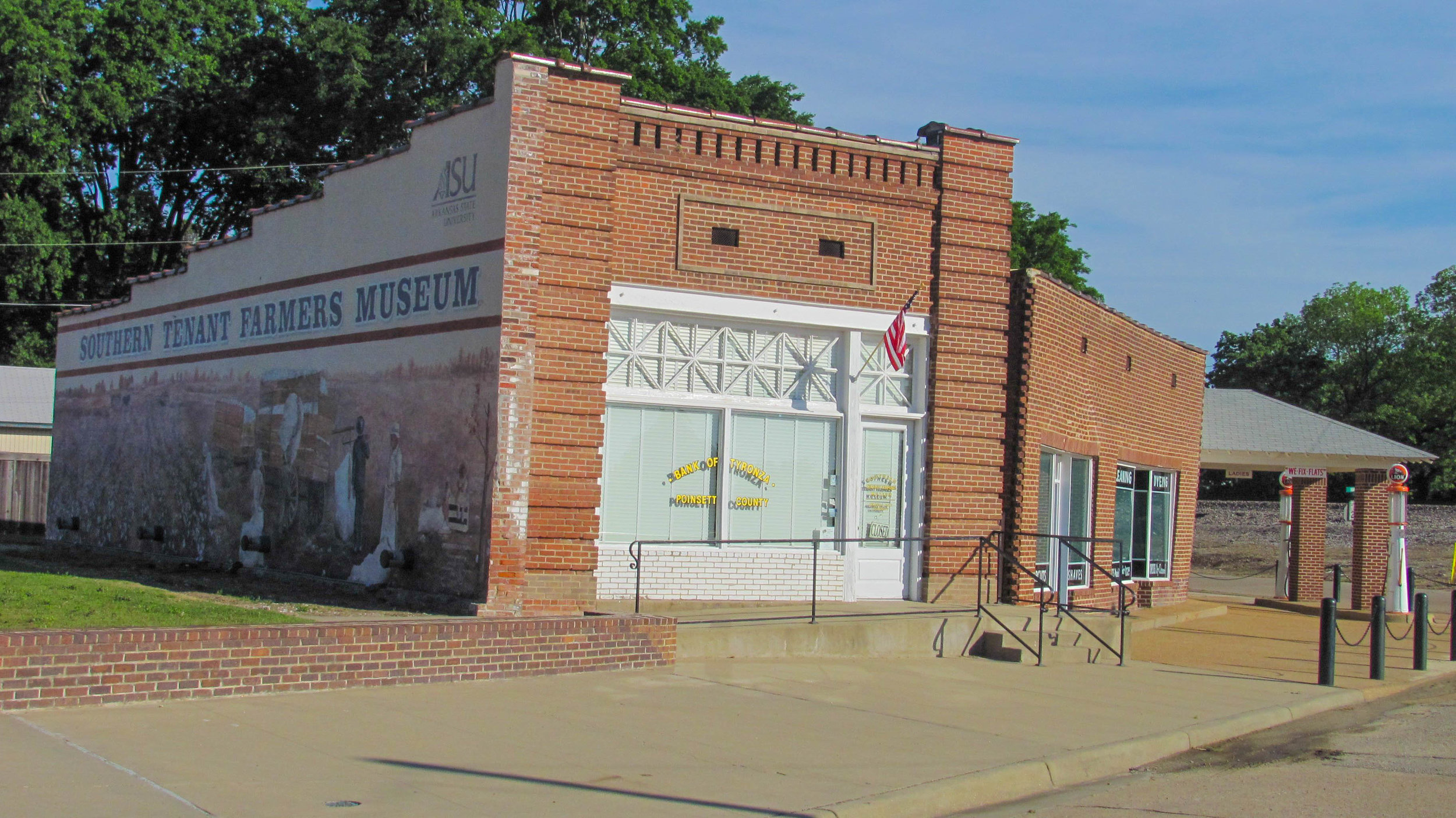Visitors Guide to Tyronza, Arkansas
Southern Tenant Farmers Museum
Tyronza is located in southeastern Poinsett County and is best known as the birthplace of the Southern Tenant Farmers’ Union. The town site was home to a Native American community dating to 1300-1400 C.E. An 1884 Smithsonian’s Bureau of Ethnology Mound Survey documented seven man-made mounds on the Tyronza ridge and forty-nine mounds in immediate vicinity. Today, there are visible remnants of only three mounds left within the town as the other mounds were destroyed either by early settlers preparing the land for farming or by the crews who constructed the railroad bed in the early 1880s.
The current community began when the Kansas City, Fort Scott and Gulf Railway constructed a raised bed for the tracks, as well as a small wooden depot in 1883 in what is now downtown Tyronza. The depot was named Tyronza Station, named for the nearby Tyronza River. The small community, including a post office, established to provide for the needs of the railway workers was called Perkins. In 1888, the community’s name was changed to Tyronza to match the name of the depot. Tyronza was primarily a lumber town. The surrounding land was heavily forested and there was a good market for timber. Cotton would soon to replace lumber as the region’s main cash crop and by 1920 Tyronza was a commercial center for the cotton economy. Local merchants would extend credit to the small cotton farmers and the 1920s were a time of growth for the area. In 1926 Tyronza officially incorporated and became a city.
Unfortunate events caused the promising economic conditions to change. The Flood of 1927 caused a great deal of damage in eastern Poinsett County and was followed by the stock market crash in 1929, and a severe drought lasting two years began in 1930. In 1930, the Bank of Tyronza failed, and most of the small farmers lost their land either to merchants foreclosing on crop liens or to the county for back taxes. The majority of the land ended up in the hands of a small number of men. These men utilized sharecroppers and tenant farmers to work the newly acquired farms.
In 1934 eleven white and seven African American tenant farmers, with the assistance of two local businessmen, eighteen local tenant farmers, met in a rundown schoolhouse just west of Tyronza and formed the Southern Tenant Farmers’ Union. The purpose of the union was to improve the living conditions of the farmers who felt they were being exploited by the land owners. The union grew into a national organization and was a forerunner of later labor and civil rights movements. Its headquarters were housed in downtown Tyronza in the back of a dry-cleaning establishment until escalating violence forced them to move the offices to Memphis. In 2003, the city gave the Mitchell-East Building, the original union offices, to Arkansas State University to restore and convert into the Southern Tenant Farmers Museum, which opened its doors in 2006.
During World War II, people left the region by the thousands, bound for military service or work in the defense industry in the cities. The shortage of labor, although relieved somewhat by utilizing German prisoners of war from the prison camp at nearby Marked Tree, forced the local planters to mechanize. Without the sharecropper and tenant farmer families to sustain the economy, Tyronza began to fail as a community. In the 1970s, Tyronza experienced a population surge as a more affluent population began looking for a home out of metropolitan areas. Fully one half of the homes in the town were built during this time period and present-day Tyronza has become a bedroom community for many of its residents that work in Jonesboro or Memphis but prefer a small town lifestyle.











